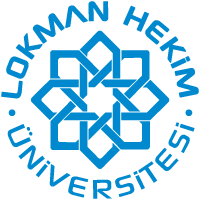| dc.contributor.author | Kocaman, Hikmet | |
| dc.contributor.author | Bek, Nilgun | |
| dc.contributor.author | Kaya, Mehmet Hanifi | |
| dc.contributor.author | Buyukturan, Buket | |
| dc.contributor.author | Yetis, Mehmet | |
| dc.contributor.author | Buyukturan, Oznur | |
| dc.date.accessioned | 2021-06-10T08:47:29Z | |
| dc.date.available | 2021-06-10T08:47:29Z | |
| dc.date.issued | 2021-04-15 | |
| dc.identifier.other | 33857180 | |
| dc.identifier.uri | http://hdl.handle.net/20.500.12591/561 | |
| dc.description.abstract | Objectives
The purpose of this study was to compare the efficacy of two different types of exercise methods in patients with adolescent idiopathic scoliosis.
Methods
In total, 28 subjects with adolescent idiopathic scoliosis with a mild curve magnitude (10 degrees-26 degrees) were randomly divided into two groups: the Schroth group (n = 14) and the core group (n = 14). The patients in the Schroth group were treated with supervised Schroth exercises, and the patients in the core group were treated with supervised core stabilization exercises; both groups performed the exercises for three days per week for a total of 10 weeks, and both were given additional traditional exercises to perform. Assessment included Cobb angle (Radiography), trunk rotation (Adam's test), cosmetic trunk deformity (Walter Reed Visual Assessment Scale), spinal mobility (Spinal Mouse), peripheral muscle strength (Biodex System 4-Pro), and quality of life (Scoliosis Research Society-22 questionnaire).
Results
It was found that patients in the Schroth group showed greater improvement in Cobb angles, thoracic trunk rotation angle, cosmetic trunk deformity, spinal mobility, and quality of life than those in the core group (p<0.05), except for in lumbar trunk rotation angle. Peripheral muscle strength improvement was greater in the core group than in the Schroth group (p<0.05).
Conclusion
Schroth exercises are more effective than core stabilization exercises in the correction of scoliosis and related problems in mild adolescent idiopathic scoliosis, and core stabilization exercises are more effective than Schroth exercises in the improvement of peripheral muscle strength. | en_US |
| dc.publisher | Sağlık Bilimleri Fakültesi | en_US |
| dc.rights | info:eu-repo/semantics/openAccess | en_US |
| dc.rights | Attribution-NonCommercial-NoDerivs 3.0 United States | * |
| dc.rights.uri | http://creativecommons.org/licenses/by-nc-nd/3.0/us/ | * |
| dc.subject | CORE STABILIZATION EXERCISE | en_US |
| dc.subject | COBB ANGLE | en_US |
| dc.subject | RELIABILITY | en_US |
| dc.subject | VALIDITY | en_US |
| dc.subject | REDUCE | en_US |
| dc.subject | THORACOLUMBAR | en_US |
| dc.subject | DEFORMITY | en_US |
| dc.subject | SCHROTH | en_US |
| dc.title | The effectiveness of two different exercise approaches in adolescent idiopathic scoliosis: A single-blind, randomized-controlled trial. | en_US |
| dc.type | info:eu-repo/semantics/article | en_US |
| dc.contributor.department | Dahili Tıp Bilimleri | en_US |















